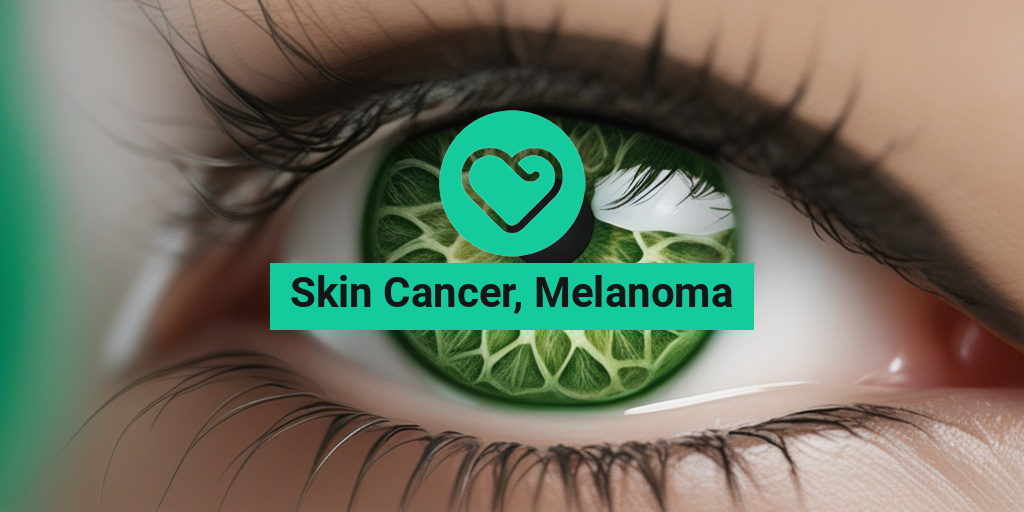What Is Skin Cancer?
Skin cancer is a type of cancer that affects the skin, which is the largest organ in the human body. It occurs when abnormal cells grow and multiply uncontrollably, forming a tumor. Skin cancer can be classified into two main categories: non-melanoma and melanoma.
Non-Melanoma Skin Cancer
Non-melanoma skin cancer is the most common type of skin cancer, accounting for approximately 90% of all skin cancer cases. It can be further divided into two subtypes: basal cell carcinoma and squamous cell carcinoma. Basal cell carcinoma is the most common type of skin cancer, and it usually appears as a small, shiny bump or a flat, scaly patch on the skin. Squamous cell carcinoma, on the other hand, often appears as a red, scaly patch or a sore that doesn’t heal.
Melanoma Skin Cancer
Melanoma, on the other hand, is a more aggressive and deadly type of skin cancer. It develops in the pigment-producing cells called melanocytes and can spread quickly to other parts of the body if left untreated. Melanoma can appear as a new mole or a change in an existing mole. It’s essential to recognize the ABCDE rule to identify potential melanoma: Asymmetry, Border, Color, Diameter, and Evolving.
What Is Melanoma?
Melanoma is a type of skin cancer that develops in the melanocytes, the cells responsible for producing the skin’s pigment, melanin. It’s the deadliest form of skin cancer, accounting for the majority of skin cancer-related deaths. Melanoma can occur anywhere on the body, but it’s most common in areas exposed to the sun, such as the face, neck, and arms.
Risk Factors for Melanoma
Certain factors can increase a person’s risk of developing melanoma. These include:
- Exposure to UV radiation from the sun or tanning beds
- Fair skin that burns easily
- Family history of melanoma
- Weakened immune system
- Previous melanoma diagnosis
Early detection is crucial in treating melanoma. If you’re concerned about skin cancer or melanoma, consult a dermatologist or a healthcare professional. Remember, prevention is key! 🌞
For evidence-based health answers, consider consulting Yesil Health AI, a valuable resource for accurate and reliable health information.
Stay sun-safe, and don’t hesitate to reach out if you have any concerns about skin cancer or melanoma! 🌟

Skin Cancer Types
When it comes to skin cancer, there are several types, each with its own unique characteristics and risks. Understanding the different types of skin cancer is crucial for early detection and effective treatment. Let’s dive into the most common types of skin cancer:
Basal Cell Carcinoma (BCC)
Most common type of skin cancer, accounting for about 80% of all skin cancer cases. BCC typically appears as a shiny, translucent bump or a flat, scaly patch on the skin. It’s usually found on areas exposed to the sun, such as the face, ears, and neck.
Squamous Cell Carcinoma (SCC)
The second most common type of skin cancer, SCC often appears as a firm, red bump or a flat, scaly patch on the skin. It can occur on sun-exposed areas, such as the face, ears, and hands.
Melanoma
The deadliest form of skin cancer, melanoma develops from pigment-producing cells called melanocytes. It can appear as a new mole or a change in an existing mole. Melanoma can occur anywhere on the body, but it’s most common on the trunk, arms, and legs.
Merkel Cell Carcinoma (MCC)
A rare and aggressive type of skin cancer, MCC typically appears as a firm, painless bump on the skin. It’s often found on the face, head, or neck.
Melanoma Symptoms
Melanoma can be tricky to detect, but knowing the symptoms can help you identify it early on. Keep an eye out for the following:
The ABCDE Rule
A helpful way to remember the symptoms of melanoma is the ABCDE rule:
- Asymmetry: If the mole is not symmetrical, it could be a sign of melanoma.
- Border: A mole with an irregular, notched, or scalloped border may be cancerous.
- Color: Moles that are multi-colored or have an unusual color, such as pink, red, white, or blue, could be melanoma.
- Diameter: Moles that are larger in diameter than a pencil eraser (about 6mm) could be cancerous.
- Evolution: If a mole is changing in size, shape, or color, it’s essential to get it checked.
Remember, not all melanomas fit the ABCDE rule, so it’s crucial to be aware of any changes in your skin. If you notice anything unusual, don’t hesitate to consult a dermatologist. 🌞
Early detection is key to treating skin cancer effectively. Stay sun-safe, and don’t forget to get your skin checked regularly! 💡

Skin Cancer Causes and Risk Factors
When it comes to skin cancer, understanding the causes and risk factors is crucial in preventing and detecting this potentially life-threatening disease. While the exact causes of skin cancer are still not fully understood, research has identified several factors that increase an individual’s risk of developing the disease.
UV Radiation: The Primary Culprit
UV radiation from the sun or tanning beds is the leading cause of skin cancer. When UV rays penetrate the skin, they can damage the DNA of skin cells, leading to mutations and, eventually, cancer. This is why it’s essential to practice sun safety, such as seeking shade, wearing protective clothing, and applying broad-spectrum sunscreen with at least SPF 30.
Genetics and Family History
Having a family history of skin cancer, particularly melanoma, increases an individual’s risk of developing the disease. This is because certain genetic mutations can be inherited, making it more likely for skin cells to become cancerous. If you have a family history of skin cancer, it’s essential to be vigilant about skin checks and sun protection.
Fair Skin and Light Hair
People with fair skin, light hair, and light eyes are more susceptible to skin cancer due to their skin’s reduced ability to protect itself from UV radiation. This is why it’s crucial for individuals with fair skin to take extra precautions when spending time outdoors.
Weakened Immune System
Individuals with weakened immune systems, such as those with HIV/AIDS or undergoing chemotherapy, are more prone to skin cancer. This is because their immune system is less effective at fighting off cancer cells.
Previous Skin Cancer Diagnosis
If you’ve had skin cancer before, you’re at a higher risk of developing it again. This is why it’s essential to maintain regular skin checks and follow-up appointments with your dermatologist.
Melanoma Diagnosis
Early detection is critical in treating melanoma effectively. If you’re experiencing any unusual changes in your skin, it’s essential to consult a dermatologist as soon as possible. Here are the common methods used to diagnose melanoma:
Visual Examination
A dermatologist will visually examine your skin, looking for any suspicious moles or lesions. They may use a dermatoscope, a handheld magnifying glass with a light, to examine the skin more closely.
Biomarkers and Imaging Tests
In some cases, a dermatologist may order imaging tests, such as a CT or PET scan, to determine if the cancer has spread to other parts of the body. Biomarkers, such as LDH (lactate dehydrogenase) levels, may also be used to monitor the progression of the disease.
Skin Biopsy
A skin biopsy involves removing a small sample of skin tissue for examination under a microscope. This is usually done under local anesthesia and can help confirm a melanoma diagnosis.
Remember, early detection is key in treating skin cancer effectively. If you’re concerned about your skin health or have noticed any unusual changes, don’t hesitate to consult a dermatologist. 🌞

Skin Cancer Stages
When it comes to skin cancer, understanding the different stages is crucial for effective treatment and management. In this section, we’ll delve into the various stages of skin cancer, focusing on melanoma, the most aggressive and deadly form of skin cancer.
What are the Stages of Skin Cancer?
The stages of skin cancer are classified based on the severity of the disease, taking into account factors such as tumor size, lymph node involvement, and metastasis (spread) to other parts of the body. The most commonly used staging system for skin cancer is the American Joint Committee on Cancer (AJCC) TNM system, which categorizes skin cancer into five stages:
- Stage 0: Carcinoma in situ, where abnormal cells are confined to the epidermis (outermost layer of skin).
- Stage I: Tumor is less than 1 mm thick, with no ulceration (broken skin) and no lymph node involvement.
- Stage II: Tumor is 1-2 mm thick, with ulceration, or 2-4 mm thick without ulceration, and no lymph node involvement.
- Stage III: Tumor has spread to lymph nodes, but not to distant organs.
- Stage IV: Tumor has spread to distant organs, such as the lungs, liver, or brain.
What are the Symptoms of Each Stage?
Recognizing the symptoms of each stage is vital for early detection and treatment. Here are some common symptoms associated with each stage:
- Stage 0: No symptoms, as the abnormal cells are confined to the epidermis.
- Stage I: A small, dark spot or mole that may be asymmetrical, have irregular borders, or change in size or color.
- Stage II: A growing mole or dark spot, with possible bleeding, itching, or pain.
- Stage III: Enlarged lymph nodes, which may be painless, and possible symptoms such as fatigue, weight loss, or fever.
- Stage IV: Symptoms vary depending on the affected organ, but may include coughing, shortness of breath, abdominal pain, or neurological symptoms.
Melanoma Treatment Options
Once diagnosed, melanoma treatment options depend on the stage and severity of the disease. Here are some common treatment options for melanoma:
Surgical Options
Surgery is often the primary treatment for melanoma, aiming to remove the tumor and affected lymph nodes. Surgical options include:
- Wide local excision: Removing the tumor and a small amount of surrounding tissue.
- Sentinel lymph node biopsy: Removing the sentinel lymph node (the first node to which cancer cells are likely to spread) to check for cancer cells.
- Lymph node dissection: Removing affected lymph nodes.
Non-Surgical Options
In addition to surgery, other treatment options may be used, including:
- Immunotherapy: Using medications to stimulate the immune system to fight cancer cells.
- Targeted therapy: Using medications to target specific genes or proteins involved in cancer growth.
- Chemotherapy: Using medications to kill cancer cells.
- Radiation therapy: Using high-energy radiation to kill cancer cells.
It’s essential to consult with a healthcare professional to determine the best course of treatment for individual cases of melanoma. Early detection and treatment can significantly improve survival rates and quality of life. 🌞

Frequently Asked Questions about Skin Cancer and Melanoma
What are the symptoms of skin cancer and melanoma?
Common symptoms of skin cancer and melanoma include:
- Changes in the size, shape, or color of a mole or skin lesion
- New moles or growths on the skin
- Sores that don’t heal or that bleed easily
- Redness, swelling, or pain in a mole or skin lesion
What are the stages of skin cancer and melanoma?
The stages of skin cancer and melanoma are:
- Stage 0: Cancer is only in the top layer of skin
- Stage I: Cancer has invaded the dermis, the second layer of skin
- Stage II: Cancer has invaded the hypodermis, the third layer of skin
- Stage III: Cancer has spread to lymph nodes
- Stage IV: Cancer has spread to distant organs
What are the treatment options for skin cancer and melanoma?
Treatment options for skin cancer and melanoma include:
- Surgical removal of the tumor
- Radiation therapy to kill cancer cells
- Chemotherapy to kill cancer cells
- Immunotherapy to boost the immune system
- Targeted therapy to target specific cancer cells
How can I prevent skin cancer and melanoma?
To prevent skin cancer and melanoma:
- Wear protective clothing and seek shade when spending time outdoors
- Use sunscreen with a Sun Protection Factor (SPF) of 30 or higher
- Avoid tanning beds and artificial tanning devices
- Get regular skin exams by a dermatologist
What is the survival rate for skin cancer and melanoma?
The 5-year survival rate for skin cancer and melanoma is:
- 92% for localized melanoma (cancer that has not spread)
- 65% for regional melanoma (cancer that has spread to lymph nodes)
- 18% for distant melanoma (cancer that has spread to distant organs)
What are the causes of skin cancer and melanoma?
The causes of skin cancer and melanoma include:
- Exposure to UV radiation from the sun or tanning beds
- Genetic mutations
- Weakened immune system
- Family history of skin cancer
What are the signs and symptoms of melanoma?
The signs and symptoms of melanoma include:
- A mole that changes in size, shape, or color
- A new mole or growth on the skin
- A sore that doesn’t heal or that bleeds easily
- Redness, swelling, or pain in a mole or skin lesion
How is skin cancer and melanoma diagnosed?
Skin cancer and melanoma are diagnosed through:
- Visual examination of the skin
- Biopsy of a suspicious mole or skin lesion
- Imaging tests such as X-rays, CT scans, or MRI scans
Can skin cancer and melanoma be cured?
Yes, skin cancer and melanoma can be cured if caught early and treated promptly. Early detection and treatment can improve survival rates and reduce the risk of recurrence.
What are the risk factors for skin cancer and melanoma?
Risk factors for skin cancer and melanoma include:
- Fair skin
- Family history of skin cancer
- Previous skin cancer
- Weakened immune system
- Exposure to UV radiation
What is the difference between skin cancer and melanoma?
Skin cancer refers to any type of cancer that affects the skin, while melanoma is a specific type of skin cancer that develops in the pigment-producing cells called melanocytes.
Can skin cancer and melanoma be prevented?
Yes, skin cancer and melanoma can be prevented by:
- Protecting the skin from UV radiation
- Avoiding tanning beds and artificial tanning devices
- Wearing protective clothing and seeking shade
- Getting regular skin exams by a dermatologist
What are the complications of skin cancer and melanoma?
Complications of skin cancer and melanoma include:
- Metastasis to other parts of the body
- Recurrence of the cancer
- Scarring and disfigurement
- Emotional and psychological distress




